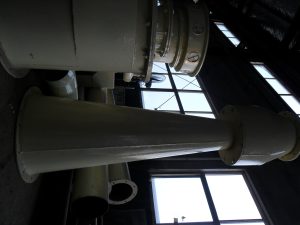
What is a Cyclone Separator and What are Its Advantages and Disadvantages?
Cyclone separators are widely used in industrial applications to separate solid particles from gas or liquid streams. They use centrifugal force generated by swirling airflow
+86 186 6169 9460
The ring roller mill uses the principles of impact, extrusion and grinding to crush materials. There are multiple layers of grinding rollers and grinding rings installed, and the material first falls between the uppermost grinding rollers and grinding rings. There is a large movable gap between the grinding roller installed on the grinding roller bracket and the pin shaft. When the material passes through the gap between the grinding roller and the grinding ring, the material will be crushed by the impact, extrusion and grinding of the grinding roller. When the material passes through the multi-layer grinding rollers and grinding rings from top to bottom, the material will be ground many times. Under the action of gravity, the crushed material falls to the bulk material tray at the bottom and is thrown to the airflow channel, and is brought into the classification area at the top by the airflow; the classifying wheel classifies the powder, and the qualified fine powder passes through the classifying wheel and enters the The dust collection system collects, and the coarse material is thrown to the inner wall of the diversion ring, and falls back into the crushing area for crushing.
The ultra-fine roller mill drives the main shaft to rotate through the transmission device. The upper end of the main shaft is connected to the rotor frame. The frame is equipped with an auxiliary shaft and a grinding wheel is installed on the auxiliary shaft. When the main shaft rotates, the auxiliary shaft rotates with it. The grinding wheel on the auxiliary shaft not only revolves around the main shaft, but also rotates around the respective auxiliary shaft. The grinding wheel generates strong centrifugal force during the revolution and rotation process, and has a strong roller grinding action with the stator. The ground material is driven by the centrifugal force and the rotating force field of the grinding wheel, and enters the grinding zone composed of the grinding wheel and the stator. The material is ground under the action of squeezing force and grinding force. The ground material falls on the slinger plate, which rotates with the main shaft. It slings the powder into the ring between the stator and the machine body, and rises along the shunt ring to the upper classifying chamber under the negative pressure of the system for classification. Qualified fine powder enters the collection system through the classification wheel, and the coarse material falls along the inner wall of the split ring into the crushing chamber to be ground again.
| Model | SRM800 | SRM1000 | SRM1250 | SRM1680 |
|---|---|---|---|---|
| Feed Size (mm) | < 10 - 20 | < 10 - 20 | < 10 - 20 | < 10 - 20 |
| Moisture (%) | < 5% | < 5% | < 5% | < 5% |
| Mill Motor (kw) | 75 | 132 | 185 | 315 |
| Classifier Motor (kw) | 15 - 18.5 | 22 - 30 | 37 - 60 | 55 - 92.5 |
| Fan Motor (kw) | 37 - 45 | 55 - 75 | 75 - 110 | 132 - 180 |
| Product Fineness (mesh) | 325 - 2500 | 325 - 2500 | 325 - 2000 | 325 - 1500 |
| Production Capacity (T) | 0. 5 - 4.0 | 1.0 - 8.0 | 2.0 - 12 | 3.0 - 20 |
Note: The production capacity is closely related to the particle size, specific gravity, hardness, moisture and other indicators of the raw materials. The above is only for selection reference.

Cyclone separators are widely used in industrial applications to separate solid particles from gas or liquid streams. They use centrifugal force generated by swirling airflow
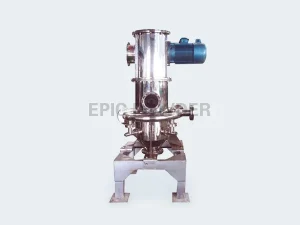
Various milling technologies are employed to achieve desired results in particle size reduction and powder processing. Two commonly used methods are jet mills and air
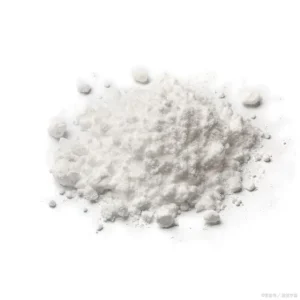
This article introduces the mechanical method of a high-specific surface area calcium hydroxide production line, including its process flow, equipment composition, preparation method, and performance
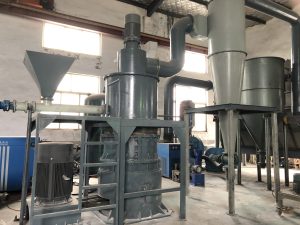
In recent years, the ring roller mill has gained significant attention in various industries due to its exceptional grinding capabilities. This advanced grinding technology offers

Introduction: Enhancing Calcium Carbonate Processing Efficiency Calcium carbonate is a widely used mineral in various industries due to its abundance, low cost, and versatility. To

The 26th International Exhibition “Khimia 2023” will be held from 30 October to 2 November 2023 in Moscow. The International Exhibition “Khimia” has been held
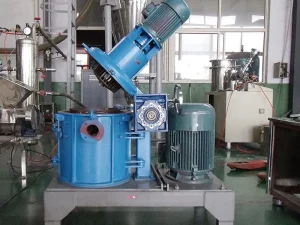
Introduction: Enhancing Carbon Black Processing for Improved Efficiency Carbon black, a highly versatile and widely used material, is a major component in a variety of

In today’s industrial world, the demand for fine powders has increased significantly. To meet this demand, various grinding technologies have been developed. One such technology
THE MACHINES WE CAN PROVIDE
CONTACT OUR TEAM
Please fill in the form below.
Our experts will contact you within 6 hours to discuss your needs for machine and processes.
© 2000-2023 Calcium Carbonate High-Value Process Expert | EPIC powder Machinery Co., Ltd. | All rights reserved | Privacy policy